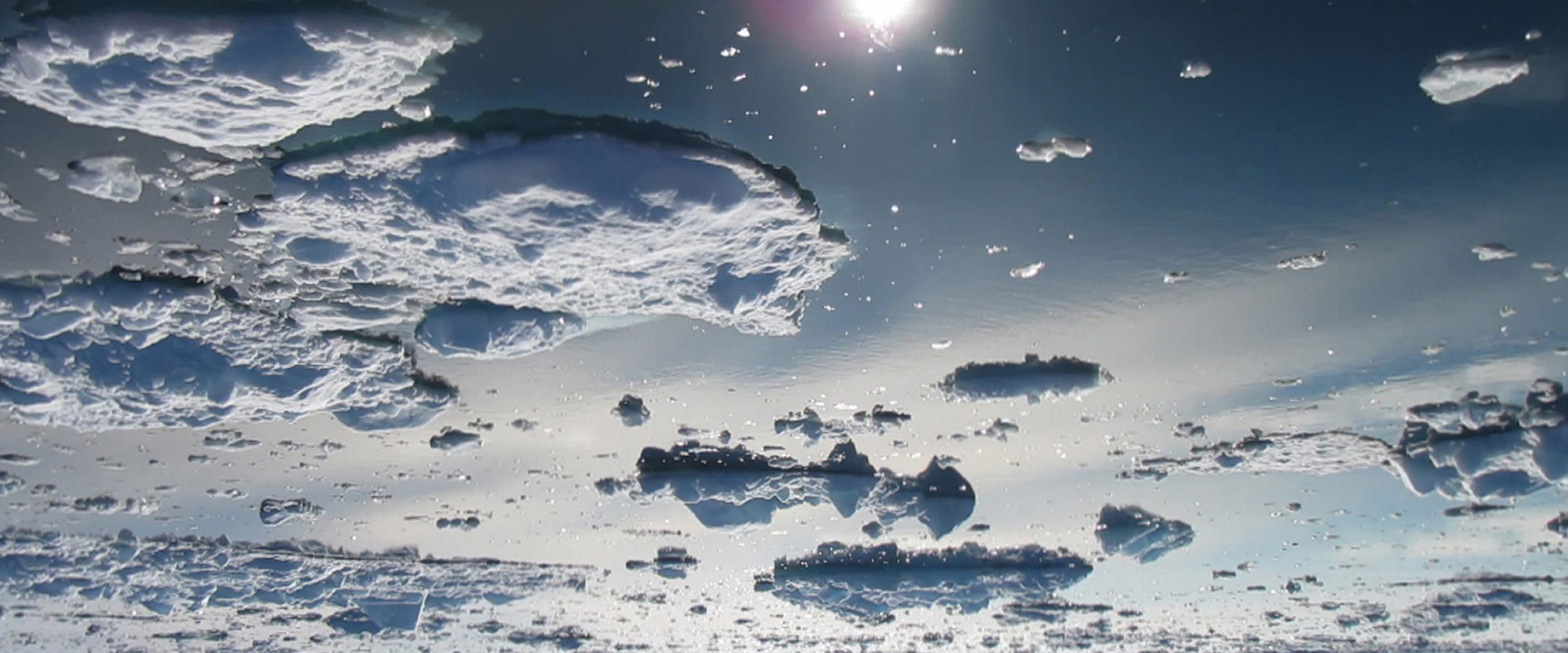When the Land Speaks is organized by the Eli and Edythe Broad Art Museum at Michigan State University and curated by Carla Acevedo-Yates and Steven L. Bridges, Associate Curators. Support for this exhibition is provided by the Alan and Rebecca Ross endowed exhibitions fund.
About the Exhibition
Ursula Biemann’s Subatlantic juxtaposes geology and climatology with human history and a touch of science fiction. The video unfolds across the Subatlantic, the latest climatic phase of the Holocene (our current geologic era, also sometimes referred to as the Anthropocene), which began about 2,500 years ago and has witnessed major civilizational changes. The voice-over alludes to a “she-scientist” who is making instrumental oceanic observations, investigating in particular the most recent glacial melts. Her subjects are the physical world, the atmosphere engulfing her, and the thoughts that are formed, reconfigured, or released under the changing conditions. The video is set in the Shetland Islands, Greenland’s Disko Bay, and a tiny Caribbean island—very different and very distant locations that are nevertheless connected through ocean streams, pointing to submerged, global dynamics that are invisible to the unaided eye.
Ursula Biemann (b. 1955, Zurich) is an artist, writer, and video essayist. Her artistic practice is research oriented and involves fieldwork in remote locations, where she investigates climate change and the ecologies of oil, ice, and water. Biemann works her findings into multilayered videos that connect micro-politics on the ground with a more theoretical, macro-level perspective.
When the Land Speaks
This program presents the work of artists who explore the land as a space of conflict, which speaks through a changing, often fractured landscape. Addressing current issues such as resource extraction, sustainability, land rights, and displacement and dispossession, the works in this video series approach language as a form that does not limit itself to verbal communication. Instead, enunciation takes place in and through the territory: in the sounds and forms that water takes, in the rumbles and cracks of the earth, and in the ancestral rituals and practices derived from the landscape. In many ways, land and language have always been interconnected, each helping to define the other. But in our present day, there is a growing disconnect between much of human society and any sense of rootedness or care for the land that supports us. Confronting these realities, the artists in this series draw attention to the power of the landscape to express itself and communicate with us, and reflect on how our eroding connection to the land may also represent a fading understanding of ourselves.
